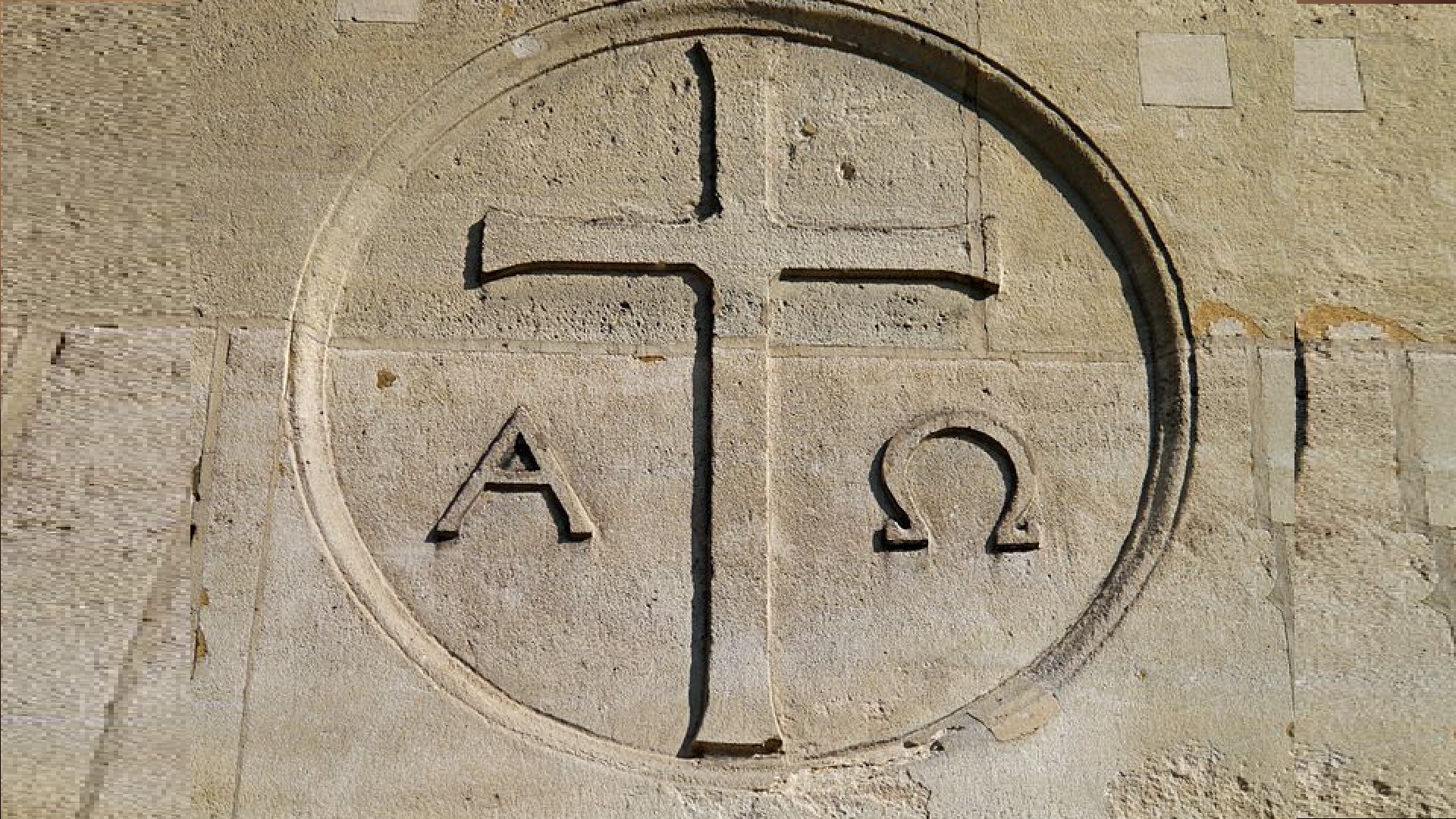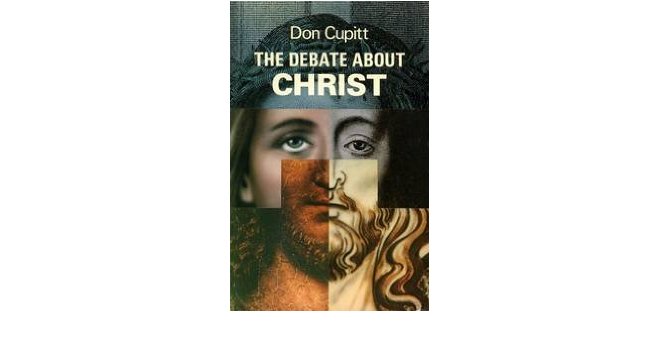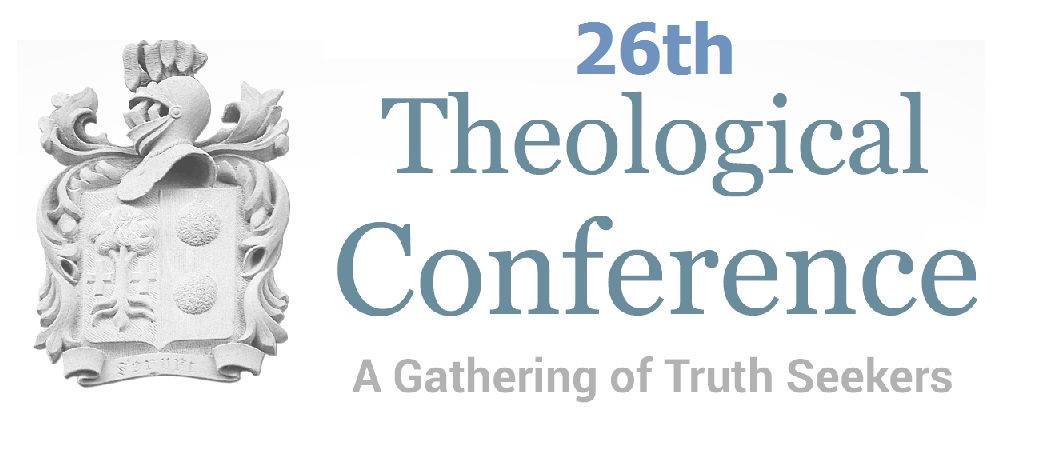
Jesus as “the Alpha and Omega”
May 6, 2017
Don Cupitt: The Debate About Christ (1995)
June 2, 2017How Christianity Banned Christ

26th Theological Conference Handout
“Hear & Obey [Shema] Israel, God is One Person [eis estin].”
Deut. 6.4; Mark 12.29; cp. John 17.3; 1Cor 8.4-6
A.T. Robertson, Word Pictures of the Greek NT:
“One, when masculine, sets forth the idea of the cardinal numeral 1; when referring to people or beings always the cardinal numeral is implied.”
Robertson’s Word Pictures: “One person.”
Vincent’s Word Studies: “The masculine eis, one person.”
Stats
- 90+ times “one” (eis) is used for a person[1].
- For one thing the neuter form of the Greek word for “one” (en, Jn 10.30) is used.
- “One God,” “God is one” (i.e., eis theos or theos eis) code for the Shema:
Neufeld, The Earliest Christian Confessions, v 5, pp 39-40:
“In addition to the Shema, & perhaps in some cases as a substitute for it, one finds that at the beginning of the Christian era the formula eis o theos, was used to express the monotheistic faith of Judaism.”[2]
The God
Wright, The NT & the People of God, preface:
“The early Christians used the phrase ‘the god’ [o theos], making an essentially Jewish-monotheistic point over against polytheism.”
Deuteronomy 4:39b “YHWH is The GOD [Ha Elohim]; there is no other [i.e., no one else, ayid od].”
- The definite article is often overlooked; the point being that the text doesn’t merely say “YHWH is God” but “YHWH is The GOD”: i.e., “The One & Only GOD.”
Deut. 4:35b “YHWH is the One, the Only GOD, & there is no-one else apart from Him [milbaddow].”
- Note the additional Hebrew milbaddow, i.e., “there’s no one else apart from Him/besides Him.”
The Only One, Alone:
John 5.44, “…the praise that comes from the only one God” (cf. Matt 24:36; John 17:3; 1 Tim 6:16).
- According to the ordinary rules of language whenever monos (“alone”, “only”) is used with theos (“God”) or kurios (“LORD”, YHWH), it cannot mean more than 1 person.
Old Greek Testament/LXX/Septuagint:
- 32.12, kyrios monos.
- 2K 19.15, o theos monos; 19, kyrios o theos monos.
- Ps 72.18, kyrios o theos o theos Israel…monos; 18, kyrios su monos; 148.13, onama…monou.
- Isa 2.17, kyrios monos; 16, theos monos; 37.20, o theos monos.
- 9.6, kyrios monos.
- Daniel 3.45, monos kyrios o theos.
NT Greek: John 5.44; 17.3, monon alethinon theon.
Jewish Apocrypha:
1 Esdras 8.25: Then said Esdras the scribe, Blessed be the only Lord God [monos o kyrios] of my fathers, who hath put these things into the heart of the king, to glorify his house that is in Jerusalem.
Odes 2.12: The only Lord [kyrios monos] led them and there was no foreign God with them.
Odes 7.45: Let them know You are the only God [kyrios o theos monos] & be glorified in all the world.
Odes 14.26: You are the only Lord [monos kyrios].
Sirach 18.2: The Lord only [kyrios monos] is righteous, and there is none other but he.
2Macc 7.37: But I, as my brethren, offer up my body and life for the laws of our fathers, beseeching God that he would speedily be merciful unto our nation; and that thou by torments and plagues mayest confess, that he alone is God [monos autos theos estin].
4Macc 5.24: And it instructs us in justice, so that in all our dealings we render what is due; and it teaches us piety, so that we worship the one only God [monon ton onta theon] becomingly.
Echad vs Yachid
It’s claimed that if the Jewish God is an “absolute unity” the Hebrew yachid (“lonely” or “only”) would have been used instead of echad in Deut. 6.4. However, the Hebrew language is perfectly able to communicate “a plurality within the Godhead,” IF IT HAD WANTED TO:
- The plural for echad, “one,” is echadim (Ezek 37.17);
- For yachid, “only,” is yachidim (Ps 68.6).
Any standard Hebrew lexicon defines echad as: 1; “one single”; “a”; “the only one”; “unique.”
Exposing the Trick
Just because the noun modified by echad may be collective, one family, one team, it doesn’t mean that the word “one” carries the meaning of that noun. Again, even when “one” describes a compound noun like family, the word “one” retains its original, numerical meaning.
Elohim = plurality of persons[3]?
Again, the Hebrew language has words that are plural in form but can be singular in meaning:
- Heaven (shah’mah’yim)
- Life (chaim)
- Water (mayim)
- Face (panim)
- Holy One (kedoshim)
- Teacher (morim)
- Maker (osim)
- Husband (baalim)
- Most High (elyonin, Aramaic)[4]
Other nouns that appear in plural form:
- “deliverance/salvation” (yeshuah),
- “parental love” (racham),
- “steadfast love” (hesed) at times appear as yeshuot (feminine plural).
The plural of lord, adonim, is used for 1 person:
- Abraham, 24:9-10;
- Potiphar, 39:2, 3, 7, 8, 16, 19, 20; 40.7;
- Joseph, 42:30, 33; cp. Num. 25:1-5; Deut. 4:7; 1 Sam. 4:5-8; 1K 11:5; 2K 1:2; 19:37.
“Let us”[5]: Gen 1.26; 3.22; 11.7; Isa. 6.8.
Debunked by many Trinitarian scholars.
Cambridge Bible for Schools and Colleges, Gen. 1.26:
Until recently, the traditional Christian interpretation [saw a reference to the Trinity]. The requirements of a sound historical exegesis render this view untenable….Elohim, in the present context, is always combined with a verb in the singular. Why should “said” be in the singular, if “let us” indicates the plurality of Gods? Again, any departure from the strictest monotheism is unthinkable in the writing of the Priestly Code….It was the old Jewish explanation that God is here addressing the inhabitants of heaven. In the thought of the devout Israelite, God was One, but not isolated [1 Kings 22:19; Isaiah 6:1-6; Job 1:6; Job 2:1; 38.7; cf. Psalm 29:1; Psalm 89:7; Psalm 103:19-22]. At the risk of appearing fanciful, we may remind the reader that the birth of the 2nd Adam was announced by “the angel,” & “there was with the angel a multitude of the heavenly host praising God” (Luke 2:13).
Quotable Quotes
- T. France, The Gospel of Mark: A Commentary on the Greek Text, p 479:
“Only Mark [12.29] records Jesus’ use [of the Shema, Dt. 6.4] (the theological preamble)…by including it. Mark…grounds the ‘first commandment’ in the essential tenet of Jewish belief, monotheism, and so establishes Jesus’ theological orthodoxy.”[6]
Encyclopedia Britannica, “Christianity”:
“Nevertheless, in the Christian understanding of Christ as being one with the Father, there is a possibility that faith in God will be absorbed in a ‘monochristism’—i.e., that the figure of the Son in the life of faith will overshadow the figure of the Father and thus cause it to disappear and that the figure of the Creator and Sustainer of the world will recede behind the figure of the Redeemer.”
An Encyclopedia of Religion, Ferm, p. 794, 1945.
“There is a tendency in [pagan] religious history for the gods to be grouped in threes….Even in Christianity, the Trinity of the Father, Son, and Holy Ghost reflects the underlying tendency.”
The Outline of History, Wells, vol. 1, p. 307f., 1956 ed.
“[The] fusing of one god with another is called theocrasia, & nowhere was it more vigorously going on than in Alexandria. Only two peoples resisted it in this period: The Jews, who already had their faith in the one God of heaven & earth, Jehovah, & the Persians, who had a monotheistic sun worship [Mithras]. It was Ptolemy I who set up not only the Museum in Alexandria, but the Serapeum, devoted to the worship of a trinity of god which represented the result of a process of theocrasia applied more particularly to the gods of Greece & Egypt….In this worship of Serapis, which spread very widely throughout the civilized world in the 3rd & 2nd centuries B.C., we see the most remarkable anticipations of usages & forums of expression that were destined to dominate the European world throughout the Christian era. [Thus,] the garments of ritual & symbol & formula that Christianity has worn, & still in many countries wears to this day, were certainly woven in the cult & temples of Jupiter, Serapis, & Isis that spread now from Alexandria throughout the civilized world in the age of theocrasia in the 2nd & 1st centuries before Christ.”
John L. McKenzie, S.J., Dictionary of the Bible, 1965, p 899:
“The trinity of persons within the unity of nature is defined in terms of ‘person’ and ‘nature’ which are Greek philosophical terms; actually the terms do not appear in the Bible. The trinitarian definitions arose as the result of long controversies in which these terms and others such as ‘essence’ and ‘substance’ were erroneously applied to God by some theologians.”
The New Catholic Encyclopedia (1967 Vol. XIV, p.299):
“The formulation ‘one God in three Persons’ was not solidly established, certainly not fully assimilated into Christian life and its profession of faith, prior to the end of the 4th century. But it is precisely this formulation that has first claim to the title the Trinitarian dogma. Among the Apostolic Fathers, there had been nothing even remotely approaching such a mentality or perspective.”
Hanson, The Search for the Christian Doctrine of God:
“The other really remarkable point about Nicaea is the condemnation in the anathemas at the end of the view that the Son is ‘of another hypostasis or ousia’ from the Father. This can only have been a highly ambiguous and extremely confusing statement. By the standard of later orthodoxy, as achieved in the Creed of Constantinople of 381, it is a rankly heretical (i.e. Sabellian) proposition, because the Son must be of a different hypostasis (i.e. ‘Person’) from the Father. And in fact there were present at the Council people…who were quite ready to maintain that there is only one [Person] in the Godhead, and who were later to be deposed for heresy because they believed this [i.e., Marcellus of Ancyra; Ossius]…The Creed produced by the Council of Nicaea was a mine of potential confusion…Not many who have written upon the subject of the Creed of Nicaea have observed this serious difficulty presented by it.”
[1] Mat 19.17; 23.9; Mar 2.7; 10.18; 12.29-30, 32; Lk 18.19; Gal 3.20; 1T 2.5; Jas 2.19; Rm 3.30; 1Cor 8.4, 6; Eph 4.6.
[2] For Paul God is the Father, par excellence! Rom 1.7; 15.6; 1Cor 1.3; 8.6; 15.24; 2Cor 1.2; 11.31; Gal 1.1-4; 4.6; Eph 1.2-3, 17; 4.6; 5.20; 6.23; Phil 1.2; 2.11; 4.20; Col 1.2-3; 3.17; 1Thess 1.1; 3.11, 13; 2Thess 1.1-2; 2.16; 1Tim 1.2; 2Tim 1.2; Titus 1.4; Phil 1.3; Cp. Deut 32.6; Jer 3.19; 31.9; Isa 63.16; 64.8; 1Chron 29.10; Mal 1.6; 2.20; Pro 3.12; Ps 103.13.
[3] NOTE: In LXX elohim = theos, a singular, not plural, word: Judges 8:33; 16:23-24; 1K 11:33.
[4] Cp. Behemoth (fem pl. behemah); Leviathan, Tannim: Gen 1:21; Isa 51:9; Ezek 32:2; Ps 74:13; Job 7:12.
[5] For its earliest usage see Dialogue of Timothy & Aquila, Ch. 4, c. 5th c. AD.
[6] See J. Marcus, Way, 145-46, for the suggestion that this orthodox statement is placed here deliberately to counterbalance the suggestion of 12:36-37 that as ‘David’s Lord’ Jesus will be enthroned beside God, thus promoting a suspect ‘two powers’ theology.
